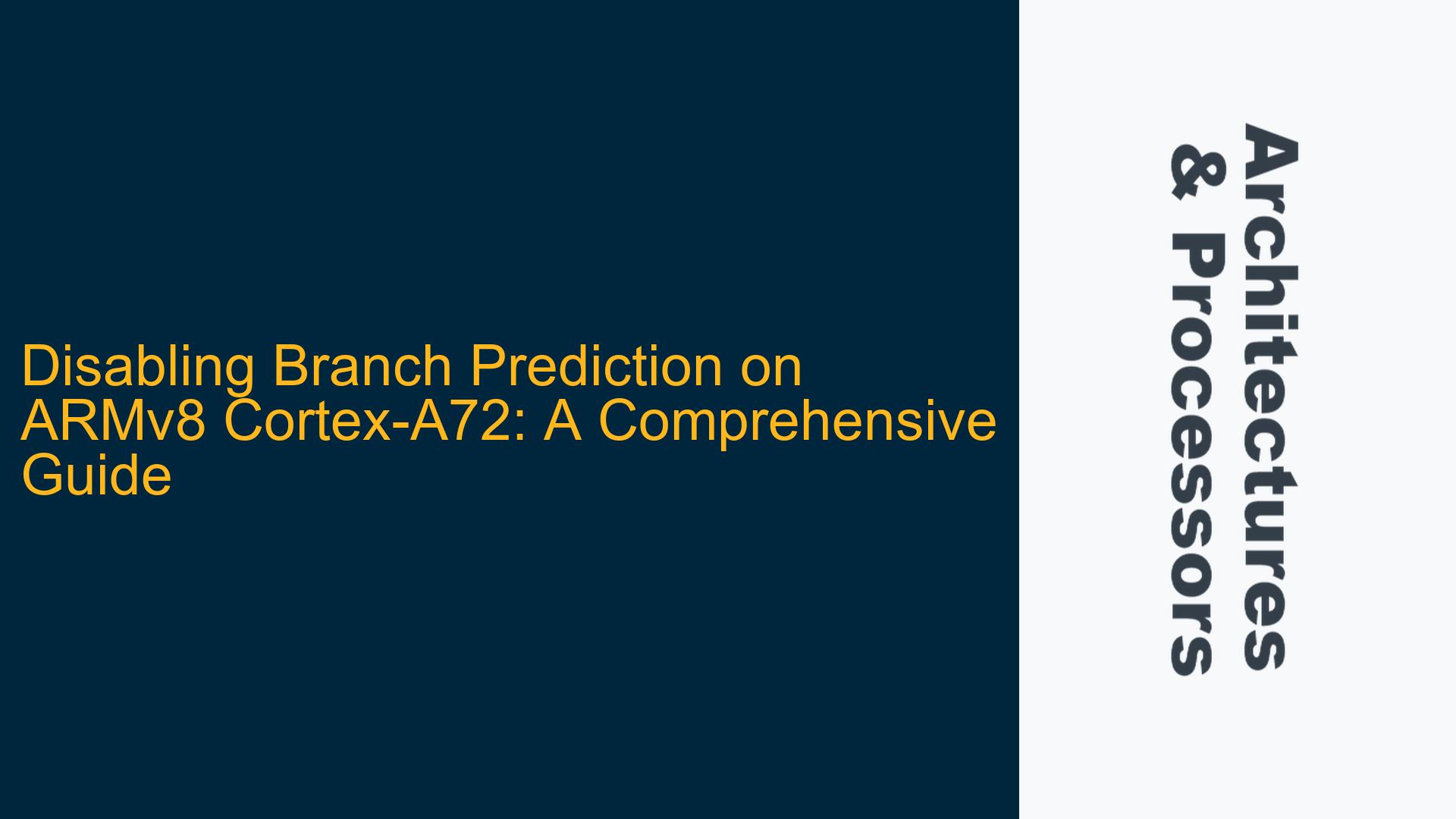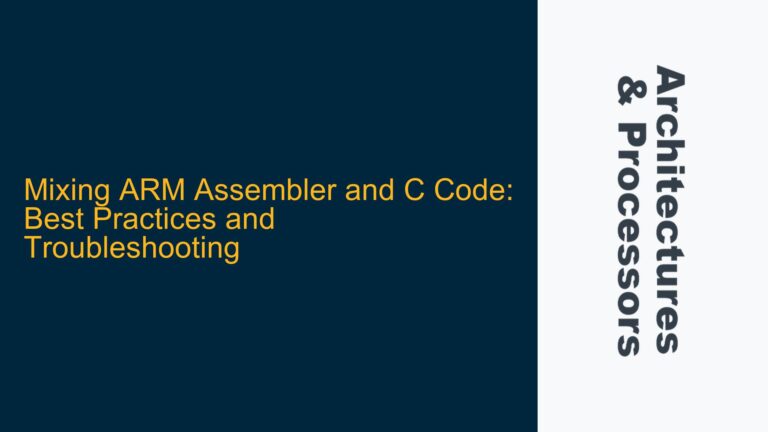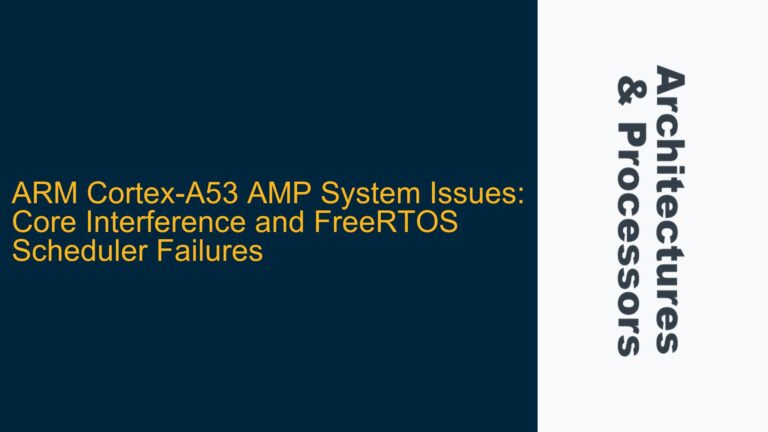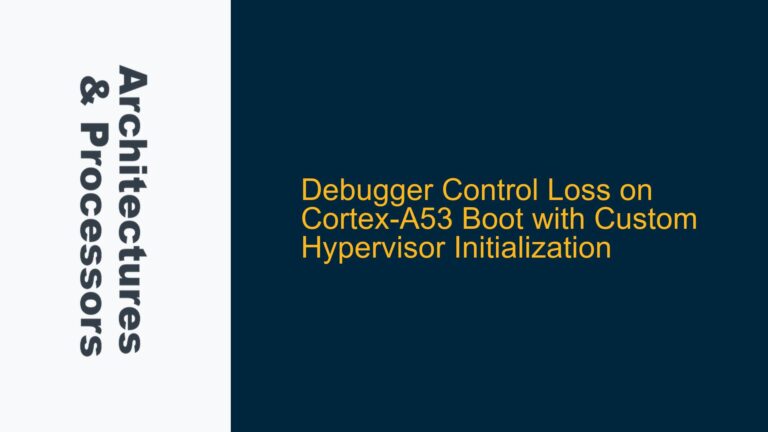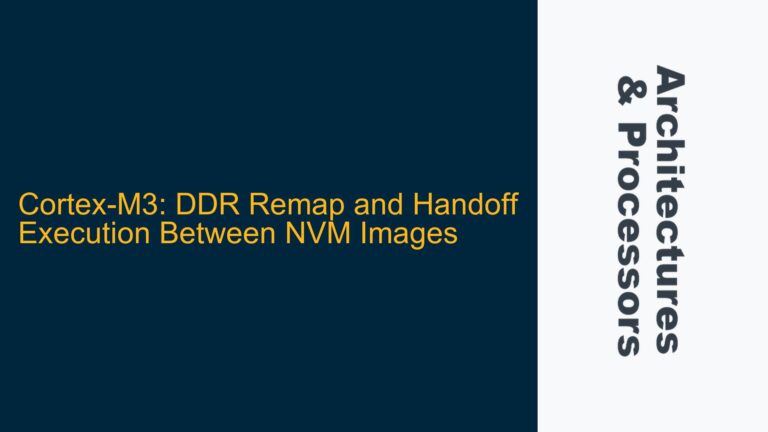ARMv8 Cortex-A72 Branch Prediction Mechanisms and Control
The ARMv8 Cortex-A72 processor incorporates advanced branch prediction mechanisms to enhance instruction execution efficiency. Branch prediction is a critical feature in modern processors, designed to mitigate the performance penalties associated with pipeline stalls caused by conditional branches. The Cortex-A72 employs a combination of static and dynamic branch predictors, including a Branch Target Buffer (BTB), Global History Buffer (GHB), and indirect predictors, to anticipate the outcome of branch instructions before they are resolved.
The Cortex-A72’s branch prediction logic is always enabled by default, as highlighted in the ARM Cortex-A72 Technical Reference Manual (TRM). Upon reset, the processor invalidates the BTB and resets the GHB and indirect predictors to a known state. This ensures that the branch prediction logic is ready to operate without requiring explicit software intervention. However, there are scenarios where disabling branch prediction may be necessary, such as during debugging, performance analysis, or when executing security-sensitive code where predictable execution timing is required.
The Cortex-A72 provides limited control over its branch prediction mechanisms through the CPU Auxiliary Control Register (CPUACTLR_EL1). This register contains specific bits that allow software to disable certain aspects of the branch prediction logic. For instance, Bit 34 disables the static branch predictor, Bit 33 disables main prediction suppression at target fetch of the micro BTB, Bit 4 disables the indirect predictor, and Bit 3 disables the micro BTB. These controls offer a granular approach to managing branch prediction behavior, enabling developers to tailor the processor’s performance characteristics to specific use cases.
Potential Issues with Disabling Branch Prediction on Cortex-A72
Disabling branch prediction on the Cortex-A72 can lead to several unintended consequences, particularly in performance-critical applications. The primary issue is the potential degradation of instruction throughput. Branch prediction is designed to minimize pipeline stalls by speculatively executing instructions along the predicted path. When branch prediction is disabled, the processor must wait for branch instructions to be resolved before fetching subsequent instructions, leading to increased pipeline bubbles and reduced overall performance.
Another concern is the impact on code that relies heavily on indirect branches or complex control flow. The Cortex-A72’s indirect predictor and micro BTB are specifically designed to handle such scenarios efficiently. Disabling these components can result in significant performance penalties, especially in applications with high branch misprediction rates. Additionally, the static branch predictor, which is responsible for handling simpler branch patterns, plays a crucial role in maintaining baseline performance. Disabling it can exacerbate the performance degradation, particularly in code with frequent conditional branches.
Furthermore, the interaction between disabled branch prediction and other processor features, such as out-of-order execution and speculative execution, can lead to subtle hardware-software interaction issues. For example, disabling branch prediction may alter the timing of instruction execution, potentially exposing race conditions or other timing-dependent bugs that were previously masked by the processor’s speculative behavior. This can complicate debugging efforts and require additional validation to ensure correct operation.
Implementing and Validating Branch Prediction Disabling on Cortex-A72
To disable branch prediction on the Cortex-A72, developers must modify the CPU Auxiliary Control Register (CPUACTLR_EL1). This register is accessible only in privileged modes (EL1 or higher) and requires careful handling to avoid unintended side effects. The following steps outline the process of disabling specific branch prediction components:
-
Accessing CPUACTLR_EL1: The first step is to access the CPUACTLR_EL1 register. This can be done using ARMv8 assembly instructions. The
MRSinstruction is used to read the current value of CPUACTLR_EL1, while theMSRinstruction is used to write a new value. For example, to read the current value of CPUACTLR_EL1, the following assembly code can be used:MRS X0, S3_1_C15_C2_0Here,
X0is a general-purpose register that will hold the current value of CPUACTLR_EL1. -
Modifying CPUACTLR_EL1: Once the current value of CPUACTLR_EL1 is read, the appropriate bits can be modified to disable specific branch prediction components. For example, to disable the static branch predictor (Bit 34), the following assembly code can be used:
ORR X0, X0, #(1 << 34) MSR S3_1_C15_C2_0, X0This code sets Bit 34 of CPUACTLR_EL1, effectively disabling the static branch predictor. Similar modifications can be made to disable other branch prediction components by setting the corresponding bits (Bit 33 for main prediction suppression, Bit 4 for the indirect predictor, and Bit 3 for the micro BTB).
-
Validating the Changes: After modifying CPUACTLR_EL1, it is essential to validate that the changes have taken effect. This can be done by reading back the value of CPUACTLR_EL1 and verifying that the appropriate bits are set. Additionally, performance benchmarks and functional tests should be conducted to assess the impact of disabling branch prediction on the application. These tests should include scenarios with varying branch patterns and control flow complexity to ensure that the system behaves as expected under different conditions.
-
Handling Side Effects: Disabling branch prediction can have significant side effects on system performance and behavior. Developers should be prepared to address these side effects by optimizing critical code paths, minimizing the use of indirect branches, and employing other performance-enhancing techniques. In some cases, it may be necessary to re-enable branch prediction for specific code sections to maintain acceptable performance levels.
-
Security Considerations: In security-sensitive applications, disabling branch prediction may be necessary to mitigate certain types of timing-based side-channel attacks. However, this must be balanced against the potential performance impact. Developers should carefully evaluate the trade-offs and consider alternative mitigation strategies, such as constant-time programming techniques, to achieve the desired security objectives without compromising performance.
In conclusion, disabling branch prediction on the ARMv8 Cortex-A72 is a complex task that requires a deep understanding of the processor’s architecture and the specific requirements of the application. By carefully modifying the CPU Auxiliary Control Register (CPUACTLR_EL1) and validating the changes through rigorous testing, developers can achieve the desired control over branch prediction behavior while minimizing unintended side effects. However, the potential performance impact and interaction with other processor features must be carefully considered to ensure optimal system operation.
